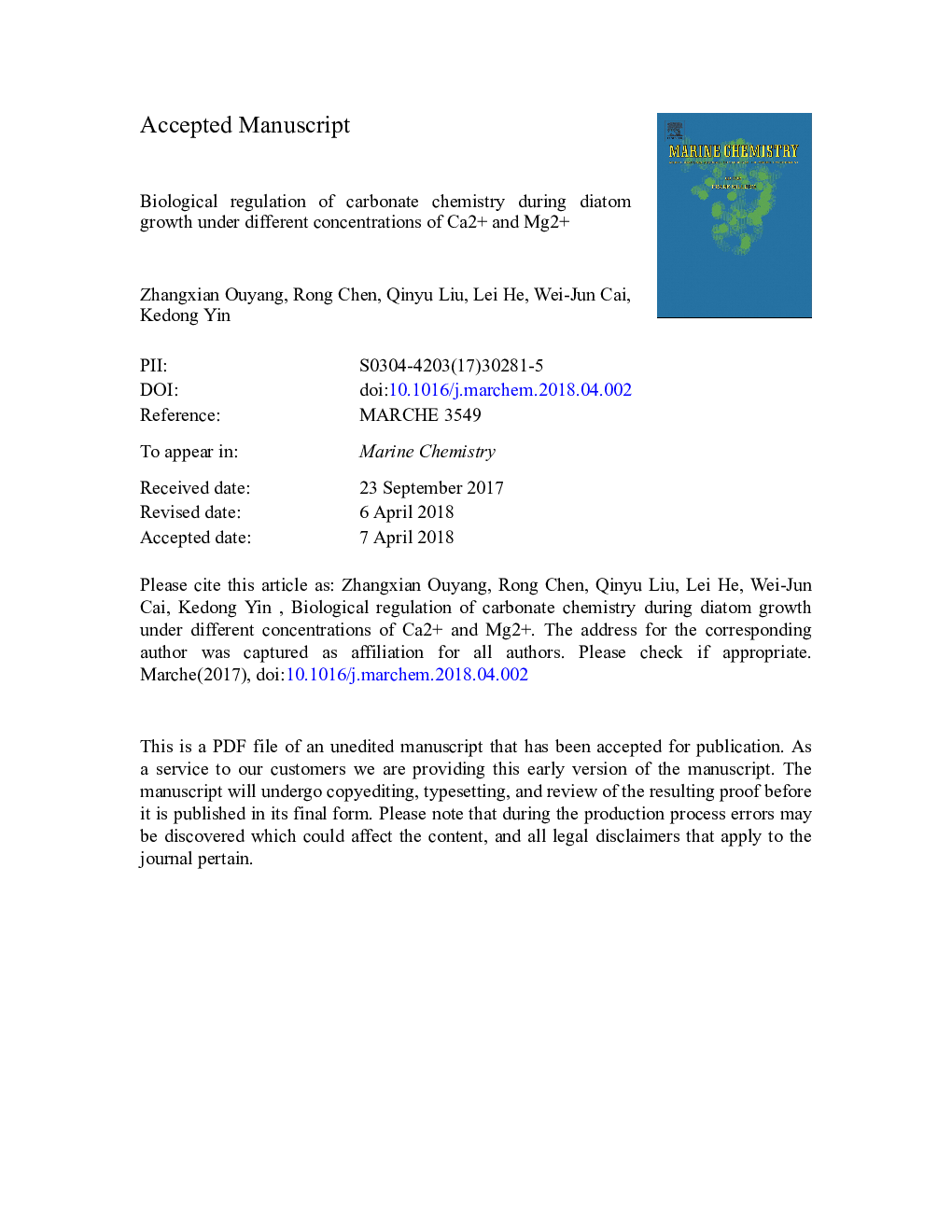| Article ID | Journal | Published Year | Pages | File Type |
|---|---|---|---|---|
| 7698789 | Marine Chemistry | 2018 | 35 Pages |
Abstract
Algal photosynthesis increases pH to a level that can induce CaCO3 and Mg(OH)2 precipitation. However, the roles of Mg2+ and Ca2+ in regulating the pH-carbonate system during algal growth are not well understood. We examined effects of different [Mg2+] (50 to 50,000â¯Î¼M) under different [Ca2+] (500 to 10,000â¯Î¼M) on pH, dissolved inorganic carbon (DIC) and total alkalinity (TA) during batch culture of the diatom Phaeodactylum tricornutum. The results showed that growth rates and biomass were higher when [Mg2+] increased under a fixed [Ca2+]. DIC and TA were almost depleted, decreasing from 1968 to ~50â¯Î¼mol kgâ1, and from 2171 to ~500â¯Î¼mol kgâ1, respectively. Paradoxically, higher [Mg2+] produced lower maximum pH, which could not be accounted for by DIC consumption. Our analysis reveals that this unexpected lower pH but larger decrease in TA was largely driven by Mg(OH)2 formation. A reduction in TA decreases pH, which stimulates algal carbon uptake by shifting carbonate species from CO32â to bio-available forms (CO2 and HCO3â). The subsequent photosynthetic drawdown of DIC forces pH to rise again, which leads to more precipitation and again a decrease in TA. We built a conceptual model to explain this biological regulation, describing the dynamic feedback loop of diatom growth, DIC uptake, pH increase, mineral precipitation, TA decrease, pH reduction, and DIC uptake, which drives depletion of DIC and TA. This mechanism demonstrates that high-biomass algal growth can overcome carbon limitation in natural waters at the expense of lowering TA, particularly in eutrophic environments.
Related Topics
Physical Sciences and Engineering
Chemistry
Chemistry (General)
Authors
Zhangxian Ouyang, Rong Chen, Qinyu Liu, Lei He, Wei-Jun Cai, Kedong Yin,
